Are the leaves on your pepper plants turning yellow? It’s a common issue among gardeners, and can be caused by several factors. Don’t worry though – there are simple solutions that will help get your plants back on track! This blog post will discuss the reasons for yellow leaves on pepper plants and offer suggestions on how to address this issue. You don’t have to watch helplessly as your plants suffer – learn how to diagnose and cure problems with yellowing Pepper Plant Leaves today!
Causes of Yellow Pepper Plant Leaves
Overwatering
Yellow leaves on pepper plants are often caused by overwatering, which is a common issue.

To keep your pepper plants healthy, make sure the soil is well-draining and consistently moist. However, be careful not to overwater them as this can cause yellowing and falling off of leaves.
Underwatering
Underwatering can also cause yellow leaves on pepper plants. Without enough water, the plant will not be able to produce enough of the green pigment chlorophyll that it needs to stay healthy and vibrant.
Disease or Pest Infestation
Yellowing of pepper plant leaves can be caused by diseases and pests. Most of the typical diseases are caused by bacteria and fungi, like blight and leaf spot. Yellowing leaves in pepper plants can be caused by pests like aphids, mites, and whiteflies that suck the sap out of the leaves. To identify the root of the problem, carefully inspect the plant for any indication of disease or infestation by pests. If you do not see any signs of disease or pests, check your watering practices. [1]
Nutrient Deficiency
Another possible reason for yellow leaves on your pepper plant is a lack of nutrients. Pepper plants need regular fertilizing in order for them to grow and thrive. If there isn’t enough fertilizer available, or if the fertilizer you have is not giving the plants all of the nutrients they need, this can cause their leaves to turn yellow. To combat this issue, you should give your pepper plants an extra dose of fertilizer that is specifically formulated for peppers.
Temperature Stress
If your pepper plant is exposed to high or low temperature, it can result in yellowing of its leaves. Pepper plants need a consistent temperature range of between 65-85 degrees Fahrenheit in order for them to thrive. Yellow leaves are caused by extreme temperatures, both hot and cold.
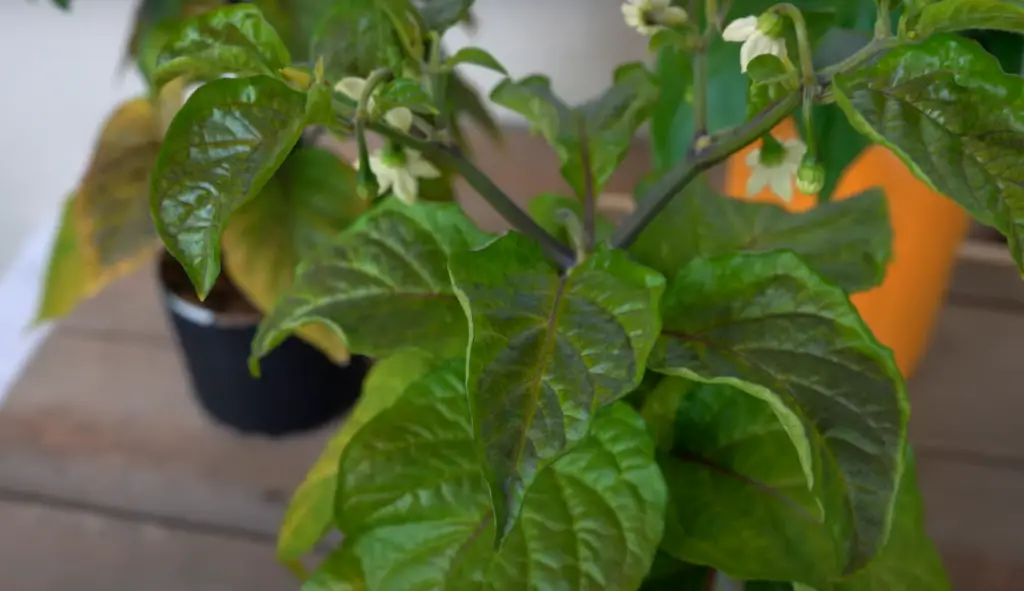
Make sure that you place your pepper plants in a location with a consistent temperature that falls within the optimum range to prevent this problem. Additionally, if necessary, you should consider using a heating pad or another type of heat source to keep your peppers warm and healthy.
Light Stress
Finally, light stress can cause your pepper plant’s leaves to turn yellow. Peppers need a good amount of sunlight in order to stay healthy and grow properly. If their sunlight exposure is too low, this can lead to yellowing of the leaves. To combat this problem, make sure that you are providing your peppers with at least six hours of direct sunlight every day. Additionally, if necessary, you should consider investing in a high-quality grow lamp to supplement the natural sunlight and ensure that your plants receive enough light for optimal growth. If you take care of these issues, then your pepper plant’s leaves should return back to their normal color in no time!
Adjust Watering Schedule and Soil Quality
Yellowing pepper plant leaves can also result from an improper watering schedule or poor soil quality. If the soil in which the pepper plants are growing is not draining properly or retaining too much moisture, it can cause root rot, which leads to yellowing of the leaves. To prevent this, check to make sure that your soil is draining well and adjust your watering schedule accordingly. Additionally, you want to be sure that the soil has adequate nutrients for the peppers to thrive; supplement with organic nutrient-rich matter such as compost if needed.
Finally, remember that overwatering can be just as damaging as underwatering so be mindful when adjusting your watering schedule. Doing these things should help bring back vibrancy and health in no time! [2]
Monitor and Treat Disease or Pests
If the yellowing of your pepper plant leaves is accompanied by spots, bumps, or other signs of disease or pests, it’s important to take action right away. Diseases such as bacterial leaf spot and early blight can cause yellowing leaves and reduce yields if left untreated. Common garden pests like aphids, thrips and spider mites can also damage pepper plants, sucking out moisture from the foliage and increasing susceptibility to disease.
To treat diseases in pepper plants, apply a fungicide containing copper or mancozeb according to package instructions. For pest infestations use an insecticidal soap or neem oil spray, again following package instructions carefully. Make sure to thoroughly cover both sides of all affected leaves for best results.
Finally, be sure to practice good garden hygiene and remove any diseased or pest-infested foliage from the plant. This will help prevent further spread of disease and pests in your garden.
Additionally, keep weeds away from pepper plants as they can harbor both pests and diseases. Good air circulation around plants also helps reduce the spread of problems, so make sure to provide adequate spacing between each pepper plant.
Use Fertilizers with the Correct Nutrients for Peppers
If you think your pepper plants’ leaves are turning yellow due to a nutrient deficiency, then try fertilizers with the correct nutrients. Make sure to read the label and purchase one that is specifically tailored for peppers. You should also check how often it needs to be applied as this may vary depending on the fertilizer type. Depending on the condition of your soil, you may need to supplement added fertilizer or adjust the amount used.
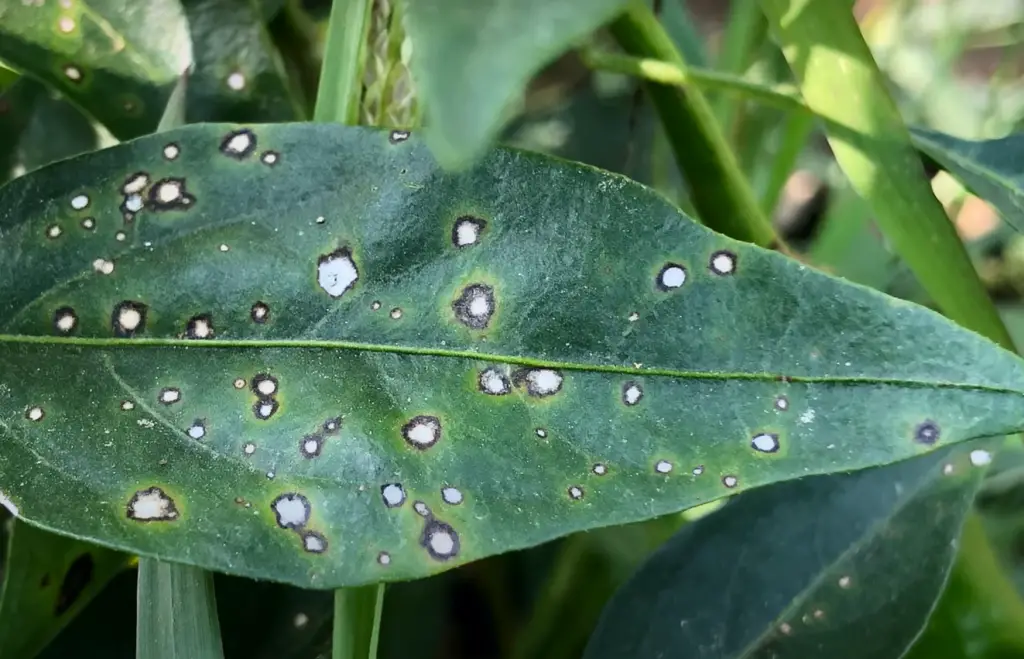
If using liquid fertilizers, make sure to mix them according to directions and water them in thoroughly when applying. Too much fertilizer can be just as damaging as not enough so always follow package instructions for better results. Appropriate nutrition is essential for healthy pepper plants and good yields, so regular application of appropriate fertilizers throughout the growing season can help keep plants healthy and productive.
Protect Pepper Plants From Temperature Extremes
Peppers are sensitive to temperature extremes. If temperatures dip too low at night, pepper plants can suffer stunted growth and yellowing of leaves.
To keep your pepper plants healthy, it’s important to protect them from these temperature extremes by providing appropriate shelter during extreme weather events. You may find that simply moving your pot to a more shaded area during the day or bringing it indoors overnight is enough to protect against unexpected cold spells.For longer periods of extreme heat or cold, consider investing in a cold frame or greenhouse to protect your pepper plants from the elements. If you live in an area with particularly hot summers, invest in some shade cloth that will provide protection for your peppers during hot days. It’s also important to ensure good air circulation, as this can help keep temperatures moderate and prevent fungal diseases associated with high humidity levels.
Finally, it’s important to keep soil moisture consistent. Peppers are susceptible to both too little and too much water, so be sure not to overwater your plants and adjust accordingly when rainfall is low. If you take these precautions, you can have healthy pepper plants even during extreme weather conditions!
Provide Adequate Light Levels for Peppers
Peppers are sun-loving plants, so they need plenty of sunlight to stay healthy and happy. If you find that your pepper plant leaves are starting to yellow, check the light levels first. Make sure that the pepper plant is getting at least six hours of direct sunlight each day. If not, you may need to move the pot or container outdoors, or use supplemental lighting indoors if necessary.
To maximize light exposure for indoor plants, position lights close enough that shadows aren’t being cast on foliage and be sure to rotate your plant every few days so all sides get equal amounts of light. If you suspect too much shade might be causing the issues with your pepper plant leaves turning yellow, then try increasing the number of hours of direct sunlight your plant is receiving. If you can’t offer more light, then make sure that the pepper plant isn’t sitting in too much water as this can cause the leaves to yellow too.

Check the soil moisture levels and adjust your watering schedule accordingly. In some cases, the leaves may even start to curl or drop off if their needs aren’t being met correctly. With adequate light levels and proper care, peppers should bounce back quickly with lush green foliage. [4]
Practice IPM – Integrated Pest Management
IPM is a key strategy for helping to keep your pepper plants healthy. IPM means monitoring the plant regularly and taking measures to prevent pests from getting out of control, such as using insecticidal soap or horticultural oil sprays. You can also use traps, such as yellow sticky traps, to help monitor the numbers of pest insects on your pepper plants. If you do need to apply a pesticide, always read and follow the label instructions carefully before doing so. You should also practice good cultural practices when it comes to caring for your pepper plants. This includes things like making sure they get enough sunlight, water, and nutrients; keeping the soil pH in an appropriate range; keeping weeds down; providing proper air circulation; and removing any diseased plants or plant parts. All of these practices will help your pepper plants stay healthy and strong, giving them the best chance to resist pests, diseases, and yellowing leaves.
How Often Do You Water Pepper Plants?
Overwatering your pepper plants can cause the leaves to turn yellow. When you water, use lukewarm water and make sure to give your plants a deep soak every other week. If possible, try using a soaker hose that can deliver an even distribution of moisture throughout the soil. Make sure not to leave standing water in saucers or trays below the plant pots as this may lead to root rot. It’s also important to check the top couple inches of soil before watering—if it feels damp, wait until it dries out before adding more water.
Additionally, if you notice wilting leaves after watering, refrain from watering again until the wilting subsides. This could be a sign of overwatering and indicates that the plant is not able to absorb any more moisture. Once the leaves perk up, you can resume normal watering cycles. [5]
Finally, if you live in an area with hot temperatures, your pepper plants may need to be watered more frequently than usual during summer months. Make sure to adjust your watering schedule accordingly—it’s always better to err on the side of caution and wait for a day or two before adding additional water. Always remember: yellow leaves are usually caused by too much water – not too little!
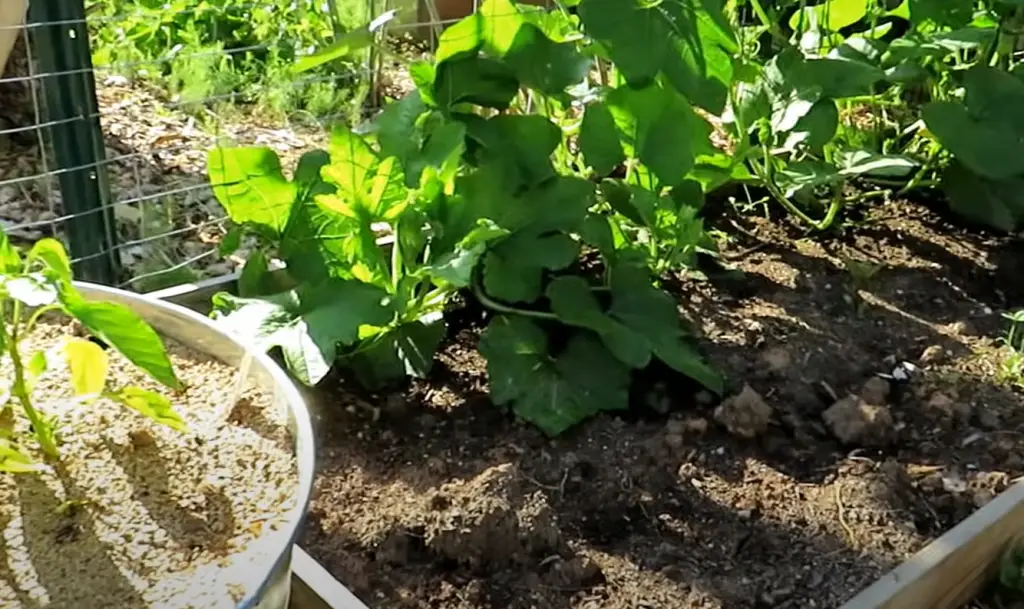
Warm climates require adequate drainage for pepper plants as well as plenty of air circulation around them so they don’t become waterlogged. If you notice yellow leaves and suspect that the soil is too wet, try adding some compost or perlite to improve drainage and aeration. In general, pepper plants need proper watering techniques in order to stay healthy and avoid leaf discoloration.
Can Pepper Plants Recover From Overwatering?
Yes, pepper plants can recover from overwatering, but it requires careful monitoring and maintenance. There are several steps to take in order to ensure a successful recovery:
- Reduce watering – Do not water your peppers as frequently or with the same amount of water that you would normally use. This will help reduce the risk of further damage due to overwatering.
- Change soil – A well-draining, nutrient-rich potting mix is essential for healthy pepper plants; this will help reduce any potential problems related to waterlogging and root rot caused by overwatering.
- Improve air circulation – Make sure that your peppers have plenty of room around them and good airflow so they can dry out quickly after watering. [6]
- Provide adequate sunlight – Your pepper plant will need plenty of direct sunlight in order to recover from overwatering. Aim for at least six hours per day and make sure not to water the leaves during the hottest part of the day.
- Monitor soil moisture – Be vigilant about monitoring your soil’s moisture level; if it feels wet or damp, wait until it dries before adding any more water. Alternatively, you can use a soil moisture meter to ensure that you are providing enough (but not too much) water for your peppers.
If you follow these steps carefully, your pepper plants should be able to recover from overwatering and return to full health!
How Long Do Pepper Plants Take To Grow?
On average, pepper plants take between 55 to 105 days to reach maturity. The exact time frame will depend on the variety of pepper plant you are growing and the environmental conditions in your garden or containers. It can also be affected by how well you care for it, as proper watering and fertilization can result in faster growth. [7]
How Do You Trim Pepper Plants?
It is important to regularly trim pepper plants as they grow and develop. Doing so helps the plant produce more fruit, control its size, and maintain an attractive shape. To trim a pepper plant, start by cutting away any dead or dying branches or leaves that are discolored or wilted.
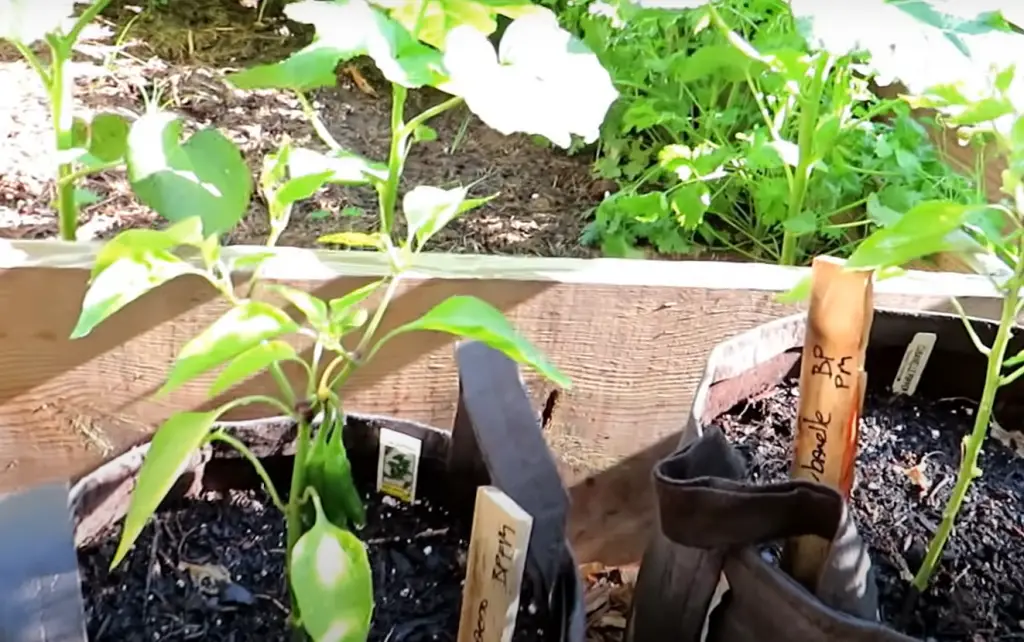
This will help keep the plant healthy and encourage new growth in their place. Next, gently pinch off any stems that have more than two sets of leaves as well as any flower buds that you may see forming on the tips of branches. Finally, use pruning shears to evenly cut back all the stems to create a balanced shape for your pepper plant. Taking proper care of your pepper plants will ensure that they continue to thrive and provide plenty of delicious peppers! If you have any further questions about how to trim pepper plants, your local nursery or gardening center will be able to provide more detailed advice.
FAQ
How do you fix yellow pepper leaves?
Yellowing pepper plant leaves can be caused by a variety of issues. The most common causes are nutrient deficiencies, sunburn, pests or disease, and overwatering. To fix yellow pepper leaves, first check your soil’s nutrient levels and fertility. If needed, amend the soil with compost or fertilizer to improve its nutrition content. Next, check for signs of pests or disease and take appropriate action (e.g., insecticidal soap). Sunburn may also be a factor if the pepper plant has been exposed to too much direct sunlight; consider moving it to an area with filtered light or providing some shade with shade cloth. Lastly, make sure you’re not overwatering the plant; allow the top few inches of soil to dry out between waterings. If the yellowing persists, consider consulting with a local gardening expert for additional guidance.
What could be causing pepper leaves to turn yellow?
Pepper plant leaves may turn yellow due to several possible causes. Nutrient deficiencies, sunburn, pests or disease, and overwatering are some of the most common culprits. To diagnose the cause of the yellowing leaves, check your soil’s nutrient levels and fertility first; amend if needed with compost or fertilizer. Then inspect for signs of pests or disease and treat appropriately (e.g., insecticidal soap). Additionally, make sure you’re not overwatering the pepper plant; allow the top few inches of soil to dry out between waterings. Finally, consider whether the plant has been exposed to too much direct sunlight and provide some shade if that is the case.
Will yellow pepper leaves turn green again?
It is possible for yellow pepper leaves to turn green again, but it will depend on the cause of the yellowing. If the yellowing is due to a nutrient deficiency or overwatering, you should be able to reverse it by addressing these issues.

However, if the discoloration is caused by disease or pests, you may need to take additional measures such as pruning away infected parts of the plant and treating with fungicides or insecticides. Additionally, plants that have suffered from extreme stress may not recover even after taking corrective steps. By providing adequate care and monitoring your plants closely, you can work towards restoring them back to full health.
How can I add calcium to my pepper plants?
Calcium is an important nutrient for pepper plants, as it helps to strengthen the cell walls of the plant and prevent blossom-end rot. You can add calcium to your soil in several ways: adding lime or crushed eggshells to the soil, applying a calcium-containing fertilizer or foliar spray, or watering with a diluted solution of liquid calcium chloride. To ensure that your peppers are getting enough calcium, it’s best to test the pH levels of your soil regularly and adjust accordingly. You should also avoid overwatering and provide adequate drainage.
How often do peppers need to be watered?
Peppers need to be watered regularly. During the growth season, peppers usually should be watered every 1-2 days. The exact watering schedule depends on the weather and soil conditions – for example, in hot weather, plants may need more frequent watering than in cooler temperatures. When watering, it’s important not to overwater; avoid waterlogging or soggy soils as this can cause root rot and disease. The best way to ensure adequate but not excessive moisture is to check the soil with your finger before watering; if it feels dry at least an inch below the surface, give the plant a good soaking until water runs out of the bottom of the pot. After that, allow enough time for excess water to drain away before returning the plant to its spot. During extreme weather, it may be necessary to water more or less frequently – for example, if the weather is very dry and hot, it may be necessary to water every day. Alternatively, during wet periods when the soil remains damp for a few days after rain, you may need to hold off on watering.
Is sugar water good for pepper plants?
Sugar water can be used to help pepper plants that have yellow leaves. The sugar helps the plant retain more moisture and increases its ability to absorb nutrients from the soil. However, if the yellowing is caused by a nutrient deficiency, it’s best to address the underlying issue rather than just watering with sugar water. In this case, you should supplement your pepper plant’s diet with a fertilizer that contains all necessary micronutrients such as nitrogen, phosphorus, and potassium. You may also want to check for any pests or diseases that could be causing further distress on your pepper plant. If left untreated, these issues can lead to greater problems down the line.
What time of day should I water hot pepper plants?
Hot pepper plants should be watered in the morning or evening when temperatures are cooler. This will reduce water loss due to evaporation and help ensure that the plant is getting all of the moisture it needs to stay healthy and strong. Avoid midday watering altogether, as this can lead to scorching of leaves and other issues. As a general rule of thumb, your pepper plant should get at least 1-2 inches of water per week. If you’re unsure how much water your hot pepper plants need, use a moisture meter to check the soil’s moisture content before and after watering.
Useful Video: Pepper Plant Leaves Turning Yellow? Common Causes & Solutions – Pepper Geek
Conclusion
If your pepper plant leaves are turning yellow, there are a few steps you can take to diagnose and resolve the problem. First, check the soil for proper drainage and inspect it for pests or fungal problems. Make sure that your peppers have adequate sunlight and water. If you discover any of these issues, address them as soon as possible to avoid further damage to your plants. Remember, if you catch signs of nutrient deficiency early on, you may be able to correct the problem by applying fertilizer. In general, all it takes is a bit of extra care and attention to keep your pepper plants healthy and thriving. With just a little effort, you can enjoy a delicious harvest!
References:
- https://www.gardeningknowhow.com/edible/vegetables/pepper/pepper-yellow-leaves.htm
- https://peppergeek.com/why-are-my-pepper-plants-turning-yellow/
- https://www.bountifulgardener.com/pepper-plant-leaves-turning-yellow/
- https://www.gardenerbasics.com/blog/pepper-leaves-turning-yellow
- https://realselfsufficiency.com/pepper-leaves-turning-yellow-causes-fixes/
- https://pepperscale.com/pepper-plants-turning-yellow/
- https://theyardandgarden.com/pepper-plant-leaves-turning-yellow/





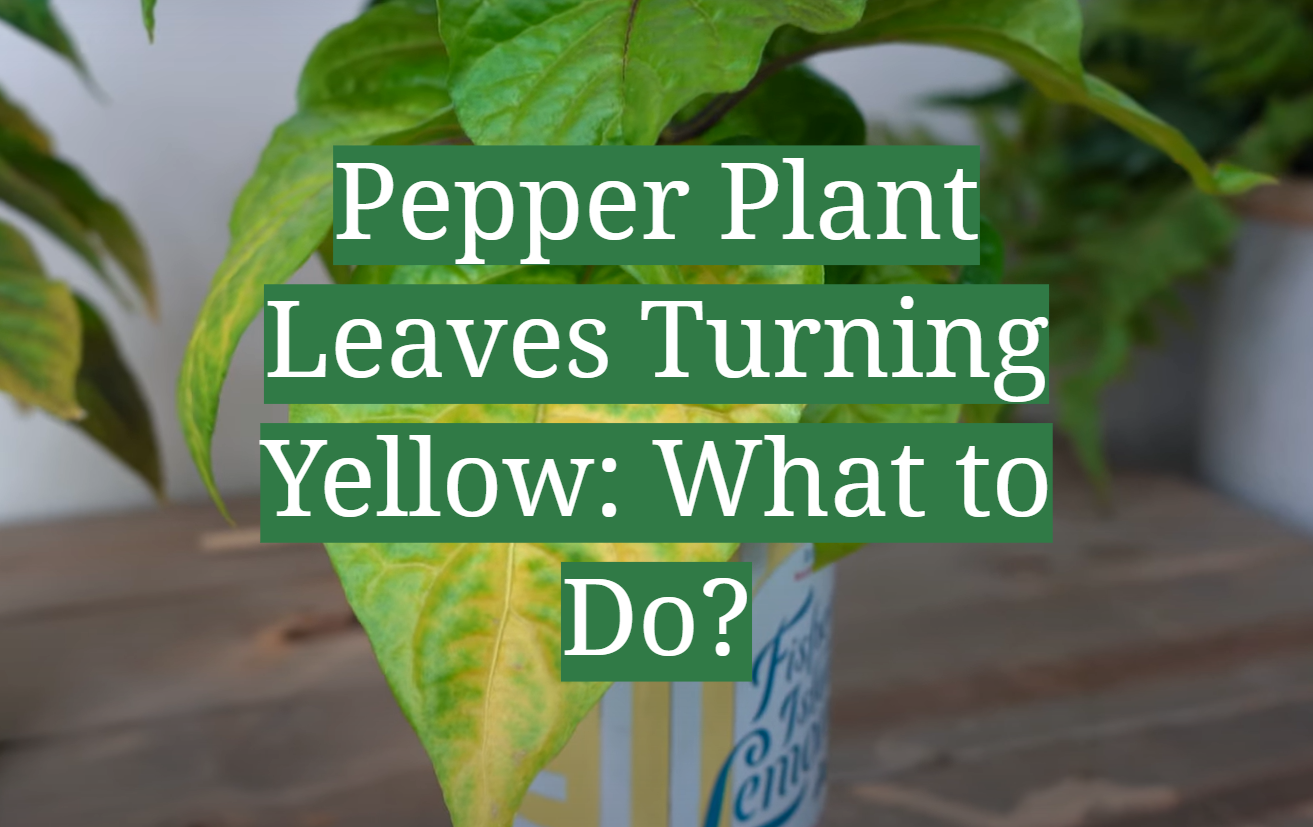


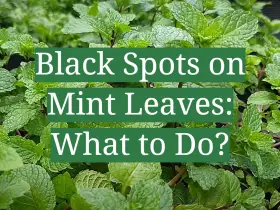
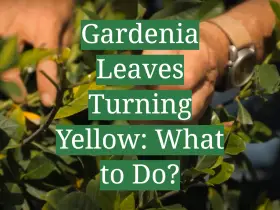
Leave a Reply
View Comments